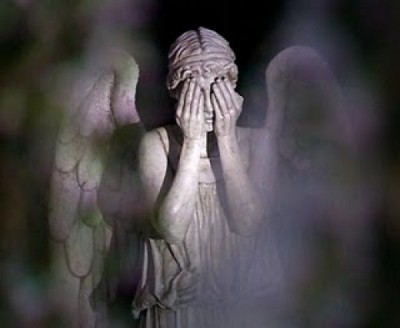 It’s October, and in the spirit of Halloween, this month’s column focuses on the monster widely regarded as the most frightening in Doctor Who history: the Weeping Angels. This alien race made its first appearance in Series 3, in the Hugo Award-winning episode “Blink”. Their creator, Steven Moffat, was inspired in part by the children’s game “Statues”, in which someone designated as the “Curator” stands at the end of a field. Everyone else, called “Statues”, stands at the far end. The intent is for a Statue to tag the Curator, thereby becoming the Curator and resetting the game.
It’s October, and in the spirit of Halloween, this month’s column focuses on the monster widely regarded as the most frightening in Doctor Who history: the Weeping Angels. This alien race made its first appearance in Series 3, in the Hugo Award-winning episode “Blink”. Their creator, Steven Moffat, was inspired in part by the children’s game “Statues”, in which someone designated as the “Curator” stands at the end of a field. Everyone else, called “Statues”, stands at the far end. The intent is for a Statue to tag the Curator, thereby becoming the Curator and resetting the game.
The Curator turns his or her back to the field, and the Statues attempt to race across and tag the Curator. Whenever the Curator turns around, the Statues must freeze and hold position for as long as the Curator looks at them. The Curator can even walk around the Statues and examine them. However, whenever the Curator’s back is turned, Statues are free to move. If a Statue is caught moving, they are sent back to the starting line (or tossed out of that round.)
A Weeping Angel’s primary method of killing involves touching its victim, which sends the person into a point in time before his or her own birth, “mercifully” allowing the victims to live out their lives in the past. The Angels then feed off the remaining time energy of their victims’ lives. The Angels can also drain energy from electric lights or electronics. When they are not being observed, they move very quickly and silently. When observed, however, they become “quantum-locked” and turn to stone. This makes them extremely difficult to kill. If two Weeping Angels look at one another at the same time, they will be trapped in stone form until an outside force moves them apart. To prevent this, they often cover their eyes, which gives them the appearance of weeping. 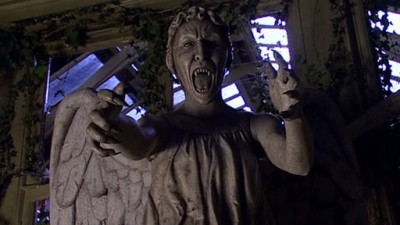 It’s implied at the end of “Blink” that all statues are secretly Weeping Angels; River Song suggests in a later episode that the Weeping Angels can transform ordinary statues into Angels–or at least animate and control them. The Doctor notes that the Angels “are as old as the universe (or very nearly), but no one really knows where they come from.” He describes them as the loneliest beings in the cosmos, since their quantum-lock reaction makes relationships difficult at best. He also claims they are “the deadliest, most powerful, most malevolent life form evolution has ever produced.”
It’s implied at the end of “Blink” that all statues are secretly Weeping Angels; River Song suggests in a later episode that the Weeping Angels can transform ordinary statues into Angels–or at least animate and control them. The Doctor notes that the Angels “are as old as the universe (or very nearly), but no one really knows where they come from.” He describes them as the loneliest beings in the cosmos, since their quantum-lock reaction makes relationships difficult at best. He also claims they are “the deadliest, most powerful, most malevolent life form evolution has ever produced.”
When closing in on a victim, their features transform from peaceful angels to horrific demons with clawed fingers and open mouths baring sharp teeth. They can close distances literally in an eye-blink, allowing them to reach a victim or move to an unseen or darkened area before quantum-lock. Without energy, Angels turn to stone even if no one is watching and start to decay. When Weeping Angels grow old or weaker, they wear away as a statue would over time, until they might not resemble their original forms anymore. Older Weeping Angels do not possess the same speed as their “healthy” counterparts but are just as deadly.
 The Angels can communicate with each other and work in groups. They are also very strong, though killing a victim through physical violence is rare unless necessary. For example, the episode “The Time of Angels” indicates that when Angels need bodies for communication, they snap their victim’s neck and rewire the brain so they can speak with the victim’s voice. They also possess the power to project themselves through images. In the same episode, an Angel trapped in the Byzantium‘s vault is able to control a screen playing video footage of it.
The Angels can communicate with each other and work in groups. They are also very strong, though killing a victim through physical violence is rare unless necessary. For example, the episode “The Time of Angels” indicates that when Angels need bodies for communication, they snap their victim’s neck and rewire the brain so they can speak with the victim’s voice. They also possess the power to project themselves through images. In the same episode, an Angel trapped in the Byzantium‘s vault is able to control a screen playing video footage of it.
Each time Amy turns away, the Angel moves. It begins to emerge from the screen, trapping her in the room. The Doctor warns Amy not to look directly into the eyes of the Angel; he and River found an ancient book that compared eyes to the doors of the soul, and the Angels may enter there. Amy is able to turn off the image on a loop break, causing the Angel to disappear. Though she is saved, Amy feels that something is in her eye. In the next episode, “Flesh and Stone”, Amy struggles with the image of an Angel imprinted in her brain. She involuntarily counts down backwards to her last moments as a human, until The Doctor instructs her to keep her eyes closed and starve the Angel. In Series 7 episode “The Angels Take Manhattan” (in which even the Statue of Liberty is an Angel), the Angels trap Amy’s husband, Rory, in the past. Amy voluntarily allows an Angel to touch her so that she can join him, thereby ending the couple’s tenure on the show.
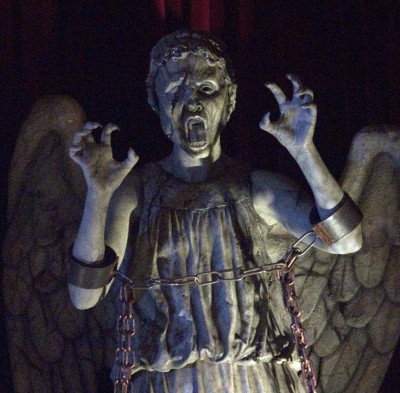 Weeping Angels have appeared in the following Doctor Who media:
Weeping Angels have appeared in the following Doctor Who media:
- Television episodes
- Series 3 (2007)
- “Blink”
- Series 5 (2010)
- “The Time of Angels” / “Flesh and Stone”
- Series 6 (2011)
- “The God Complex” (cameo)
- Series 7 (2012)
- “The Angels Take Manhattan”
- Novels
- Touched By An Angel
- Magic of the Angels
- The Angel’s Kiss
- Short stories
- Living History
- Suddenly in a Graveyard…
Images are copyrighted per their respective owners
The Doctor Who Project: The Weeping Angels
 Horror News | HNN Official Site | Horror Movies,Trailers, Reviews
Horror News | HNN Official Site | Horror Movies,Trailers, Reviews



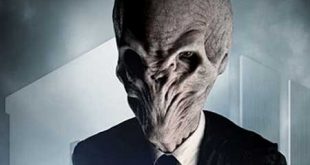
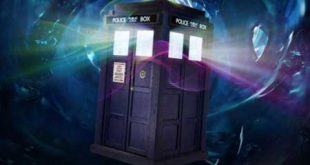
Very good article about one of the most interesting (and creepy) monsters in Dr. Who. I think the coolest thing about the Dr. Who menagerie is learning their histories, in dribs and drabs. It’s very suspenseful. Thanks!